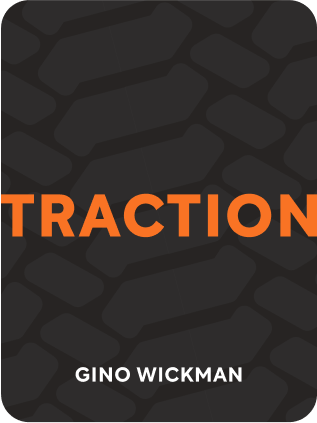

This article is an excerpt from the Shortform book guide to "Traction" by Gino Wickman. Shortform has the world's best summaries and analyses of books you should be reading.
Like this article? Sign up for a free trial here .
What is the Accountability Chart? What is its purpose?
The Accountability Chart is an organizational chart that defines the departments and roles in your business. The purpose of the Accountability Chart is to define the responsibilities, functions, and lines of accountability between them.
Here is how to create an Accountability Chart for your business.
What Is the Accountability Chart?
Before you can put people in positions, you need an accountability structure. The Accountability Chart is an organization chart that defines the functions (departments) and roles in your business.
A business typically has three major functions or departments, which are equally important and interdependent:
- Sales and marketing to generate business.
- Operations, which produces the product or provides the service
- Finance and administration, which handles the money
All three functions need to be strong or the company will struggle. For instance, it will fail if it has a strong sales effort but the operations department can’t reliably deliver the product.
For the Accountability Chart, visualize the three functions as three boxes lined up horizontally.
Only one person should be in charge of each function and accountable for its performance. If you have more than one name in a box on your organization chart, your lines of accountability aren’t clear, and this is likely hindering your company’s ability to grow.
Some functions may be subdivided—for instance sales and marketing or finance and administration may be split—but remember to keep things simple.
The Integrator and Visionary Roles
To coordinate the three major departments and manage the tension that will develop among department heads, a company needs an “integrator,” usually a general manager, CEO, or president, who runs the overall business. In addition to the integrator, many organizations have another key role: that of visionary.
The visionary is usually the company’s owner, co-owner, or founder. When there are co-founders or partners, one is often the visionary and the other the integrator.
They’re opposites in many ways. The integrator manages the business nuts and bolts: profit and loss, overall business objectives, and day-to-day operations. The integrator is a good manager, who solves problems and holds people accountable. She tends to be practical and logical.
In contrast, the visionary is a creative person, whose new ideas keep the company growing. He solves big problems and is good at building outside relationships with banks, vendors, and key clients. The visionary is attuned to the company culture and morale.
The visionary and integrator have unique talents and complement each other when working within a structure that defines their roles and responsibilities. If a company has a visionary leader but lacks an integrator, the leader may struggle to gain traction and feel frustrated at having to get involved in day-to-day operations.
Defining Roles With Accountability Chart
The Accountability Chart identifies the key roles within the accountability structure of each major business function or department. For example, the visionary function’s roles might be: research and development (ideas), problem-solving, key relationships, selling, and culture.
Everyone on the chart who has direct reports is responsible for three things—leading, managing, and holding people accountable, which can be designated on the chart by the acronym LMA.
To fill out your Accountability Chart:
- Depict the major functions or departments as well as the sub-functions that report to them.
- List the key roles of each function.
- Once you’ve created the best structure for your company, put the right people in the right positions.
Your Accountability Chart should look like a typical organization chart, but with bullet points indicating roles. In total, it defines functions, roles, and the reporting structure. Your structure creates accountability. Meanwhile, your culture should be open and honest, encouraging communication across all organizational lines, so there are no silos.
The Right Positions
Once you’ve created your accountability structure, your ultimate goal is for people to be in positions where they’re functioning at their highest level.
When considering someone for a position, use the GWC tool. Ask yourself whether they: 1) “get” it, 2) want it, and 3) are capable of doing it. No one can perform at their highest level without meeting all three criteria.
In fact, when you have a performance problem—when someone isn’t meeting their job responsibilities—it’s usually because they don’t meet one of the criteria. As a result, you can’t delegate responsibility to them because you can’t trust them to do the job; you have to do part of it yourself and you’re both frustrated.
Here’s what the criteria mean:
1) G: Get it: When someone “gets” or understands a job, they fully grasp the role and responsibilities, including the systems, deadlines, and the way the job relates to other positions and the company’s mission.
2) W: Want it: To do well in a job, the person also must have a strong desire and motivation to do it, as well as truly enjoy it. He doesn’t need to be pushed or cajoled by a manager to do what’s required.
3) C: Are Capable of doing it: Being capable means having the intellectual, physical, and emotional capacity to do the job. A position may require more than 40 hours a week, which not everyone will want to commit to, or it requires certain experience, knowledge, or interpersonal skills.
In applying the GWC test, you may find that one or more members of your leadership team are in the wrong position, and you’ll need to make leadership changes to achieve your vision. Here are some additional personnel considerations:
- One Person, two jobs: One person can sometimes do more than one job; this is fine as long as they have the time and capability. In startups, the owner/founder starts out filling nearly every seat. But as the company grows, the jobs grow and you need additional people.
- Delegate: As your company grows, you and your leadership team will have to delegate, so you can perform at your highest level—working on building your company for the future rather than focusing on daily nuts and bolts. If you’re working at 120% of capacity, you need to delegate the extra 20% so you can devote your full ability to being the leader. If you don’t delegate, you’re underperforming as a leader and holding your company back.
- Expect your Accountability Chart to evolve: The Accountability Chart is a tool to structure and track your company’s growth. It will continue to evolve. If your company is growing at 20% a year, you’ll probably need to change your organization chart every quarter.
Terminations
As you develop your Accountability Chart, you’ll discover people who aren’t a good fit for your company. Don’t immediately start firing people—proceed step by step to avoid creating a lot of vacancies at one time and endangering the company.
However, don’t ignore problems—hoping they’ll resolve themselves or sending people to training that isn’t going to help is like overwatering a plant when what it needs is pruning.
Also, don’t be tempted to procrastinate to avoid the discomfort of a termination. It will only be painful for about 36 hours—the time leading up to and including the termination. Things will improve significantly afterward. Employees who were picking up the slack or suffering because of someone’s poor performance will be grateful that you acted. To avoid 36 hours of pain, some managers and their teams end up suffering much longer.

———End of Preview———
Like what you just read? Read the rest of the world's best book summary and analysis of Gino Wickman's "Traction" at Shortform .
Here's what you'll find in our full Traction summary :
- How a first-time entrepreneur can gain the traction needed to grow
- Why hard work and determination aren't enough for your business to succeed
- The 6 key principles of the Entrepreneurial Operating System






